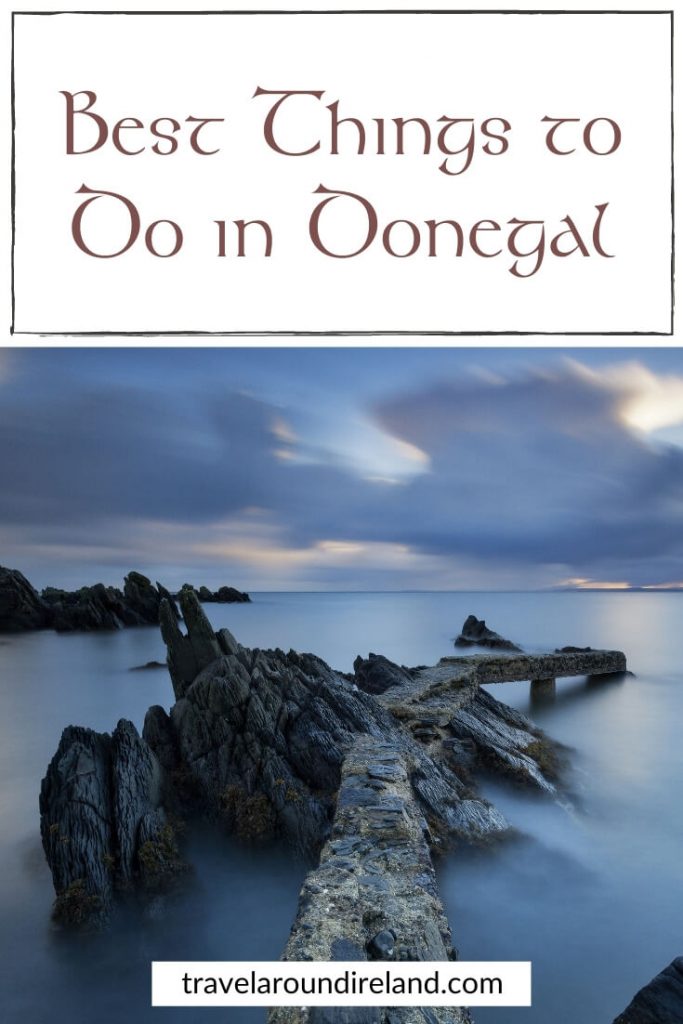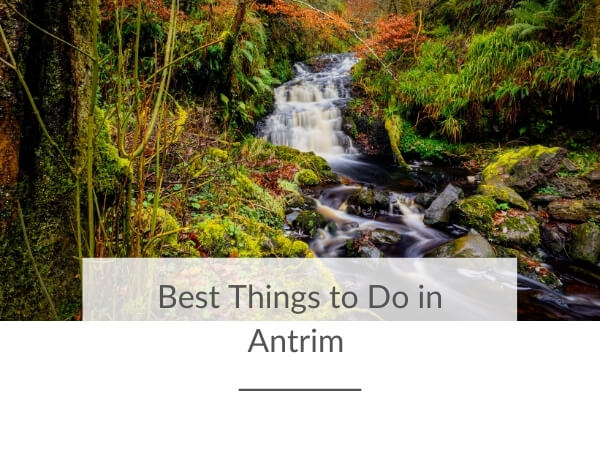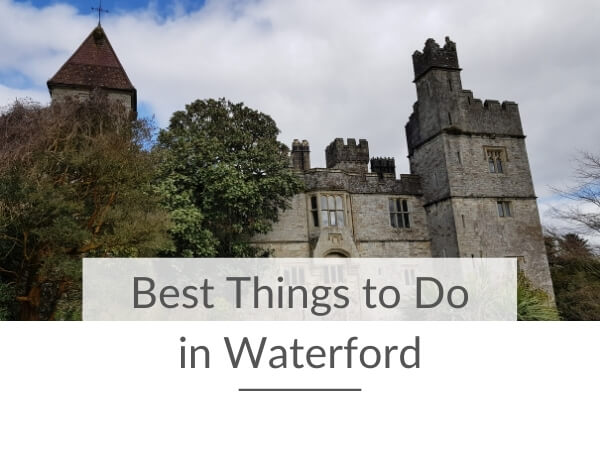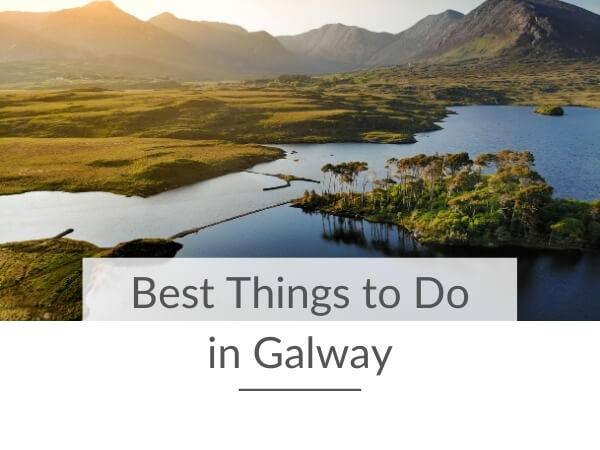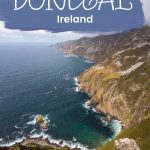Often called the wild child of Ireland, County Donegal was voted one of the coolest places on the planet by National Geographic Traveler in 2017. If you are considering visiting this beautiful corner of the Emerald Isle, this post will help you decide which of the best things to do in Donegal, Ireland to add to your Donegal itinerary.
*This post contains affiliate links, which may include Amazon affiliate links. To read more about affiliate links, please visit my Disclosure Policy page.
Donegal is a county filled with extremes. From a wild and rugged coastline dotted with spectacular beaches, to a mountainous interior with stunning lakes and forests, this is often one of the least visited places in Ireland. And yet, it contains some of the most beautiful in Ireland to visit. Donegal is also home to Ireland’s most northerly point and its coastline forms a section of the Wild Atlantic Way, which can easily be combined with a road trip on the Causeway Coast.
In this guide to some of the best places in Donegal to visit, you will soon be adding this county to your Ireland bucket list.
Best things to do in Donegal, Ireland
When it comes to things to do, Donegal, Ireland has plenty to offer travellers of every type. From adventurous outdoor travellers to those who love history, there is something in this county for everyone. I will give you a list of 10 ideas of what to see in Donegal if you choose to visit this beautiful part of Ireland.
Slieve League
One of the best places to visit in Donegal is Slieve League. These spectacular sea cliffs in Donegal are often overlooked by the Cliffs of Moher in County Clare, but they stand nearly three times taller than their more popular relatives. They are among the highest in Europe with parts of them plunging 600m into the sea.
The Slieve League cliffs are one of Ireland’s gems and are free to visit, unlike the Cliffs of Moher. They are also one of the top Donegal attractions along the Wild Atlantic Way.
The cliffs are located approximately 1 hour west of Donegal Town and are best accessed from the town of Teelin. Driving the road west takes you through the rugged landscape until you reach the lower first car park. A further 1.5km along the road is the second upper car park beside the viewing point, a car park that is often full in summer. You can also reach the cliffs on foot from Teelin by following the meandering Pilgrim’s Path.
What makes these cliffs even more spectacular are the colour changes they undergo at sunset. The rock face changes from red to amber and ochre provided the sun is shining. Experienced hikers can get better views of the cliffs by following the footpath to One Man’s Pass, a narrow ridge that reaches the summit of Slieve League. However, mist and rain can roll in at any time making it treacherous. Inexperienced hikers can climb the first 500m for great views of the cliffs before turning back.
Take a Slieve League cruise from Killybegs and discover the cliffs from the water. Book your tour here.
Find accommodation near Killybegs here.
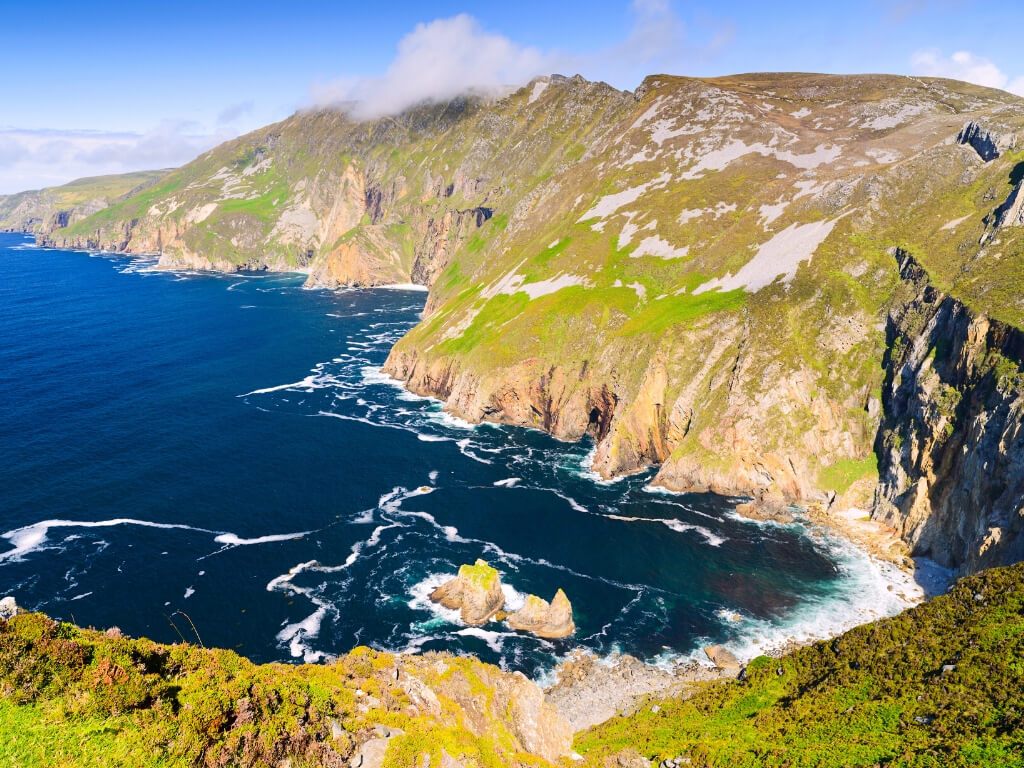
Derryveagh Mountains and Glenveagh National Park
One of the top 10 things to do in Donegal is to drive through the Derryveagh Mountains and then visit the Glenveagh National Park, one of the six national parks of Ireland.
The Derryveagh Mountains make up a large proportion of the landmass in Donegal and are one of the least populated regions of Ireland. Part of this mountain range also makes up the Glenveagh National Park. There are hiking trails within the mountains leading to various peaks, the highest of which is Mount Errigal. At the nearby town of Dunlewey, you can see the Poisoned Glen, an ice-carved hollow, and Dunlewey Church, a ruined church that is set in a stunning landscape. Visitors can still see the white marble and blue quartzite that was used in its construction.
After exploring the mountains, head to the Glenveagh National Park. Ireland’s second-largest national park has lakes, mountains, valley and forests. There are many trails around the lake and through woods and bogs, from which you may be lucky to spot some of the resident deer and other wildlife. One of the top Donegal attractions in the park is the Glenveagh Castle, built in the 1800s by landowner John Adare. The castle is accessed by guided tour and its exotic gardens are a must-visit. Glenveagh National Park itself is free to visit and you should spend a day wandering the trails. Just remember your waterproofs and a packed lunch.
Why not take a guided tour of the park with a knowledgeable local. Book your tour here.
Find your accommodation near the Glenveagh National Park by clicking this link.
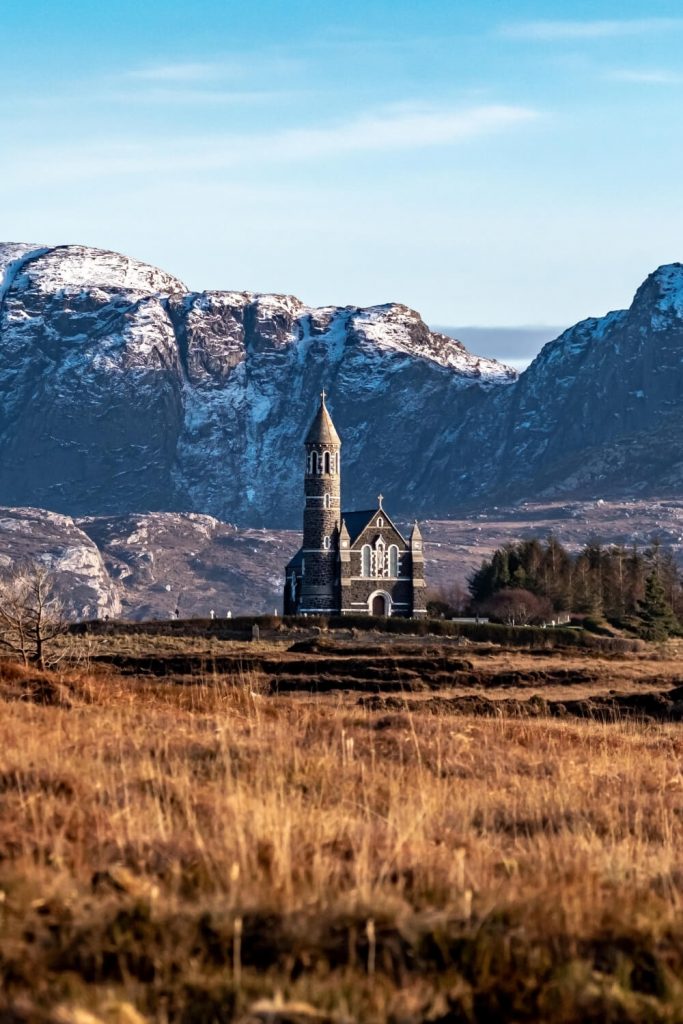
The Rosses
One of the top things to do in Donegal is to explore the area known as the Rosses. This unspoilt corner of Donegal stretches from the town of Glenties in the south to Gweedore in the north and contains some of the best coastlines of County Donegal.
This area of Donegal is also a strong Gaeltacht area (Irish-speaking). This barren landscape is studded with lakes, sea inlets, caves, clifftops, and beaches. Along the coast, you will also be able to see sea arches and stacks, and Crohy Head is known for its unusual cliff formations including arches. It is an area of natural beauty and ideal for those who love the outdoors and nature.
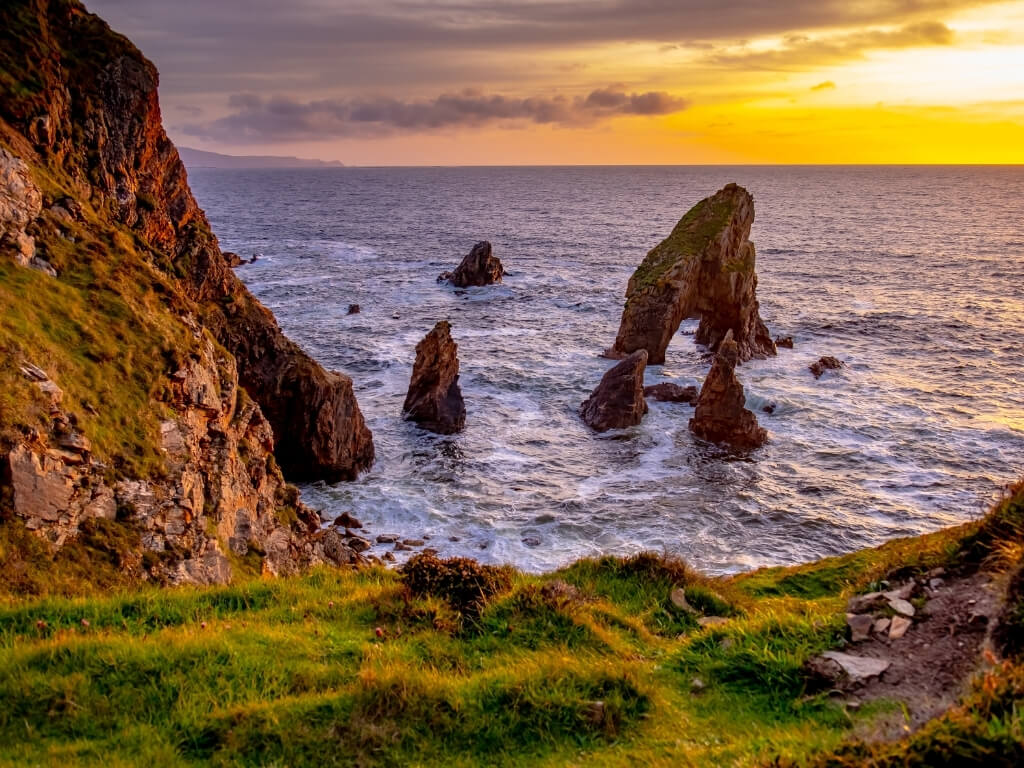
Fanad, Rosguill and Inishowen Peninsulas
Some of the best attractions in Donegal can be visited during a Donegal road trip through some of its peninsulas, all of which feature along the Wild Atlantic Way. Donegal’s main peninsulas are Rosguill, Fanad and Inishowen and each is worth a visit.
Rosguill juts out between Sheephaven Bay and Mulroy Bay into the Atlantic Ocean. Sheephaven Bay is home to Doe Castle, once a stronghold for the Clan Sweeney for more than 200 years. Visitors can take guided tours in the tower house during the summer, while the grounds are open daily.
Fanad Peninsula is east of Rosguill and is Donegal’s second most northerly point. It stretches from Mulroy Bay in the west to Lough Swilly in the east and is a beautifully rugged coastline dotted with high cliffs and sandy beaches which are some of the best beaches in Donegal. One of the best Donegal activities on the Fanad Peninsula is to visit the Fanad Lighthouse. Visitors can take a tour to learn about the lighthouse and the best views of it are from just across the sea inlet on Fanad Head.
The most northerly point in Ireland, Malin Head, is located on the Inishowen Peninsula in County Donegal. This sparsely populated place is a great place to visit in Ireland. The peninsula has a coastline that is rugged, as you’d expect in Donegal, and has ancient sites, ruined castles and waterfalls to visit. Places to visit include Buncrana Castle, the Doagh Famine Village, Fort Dunree and the Glenevin Waterfall.
Book a tour of the Fanad Peninsula here. Or a tour of the Inishowen Peninsula here.
The Peninsulas of Donegal are best visited from Letterkenny. Find your Letterkenny accommodation here.
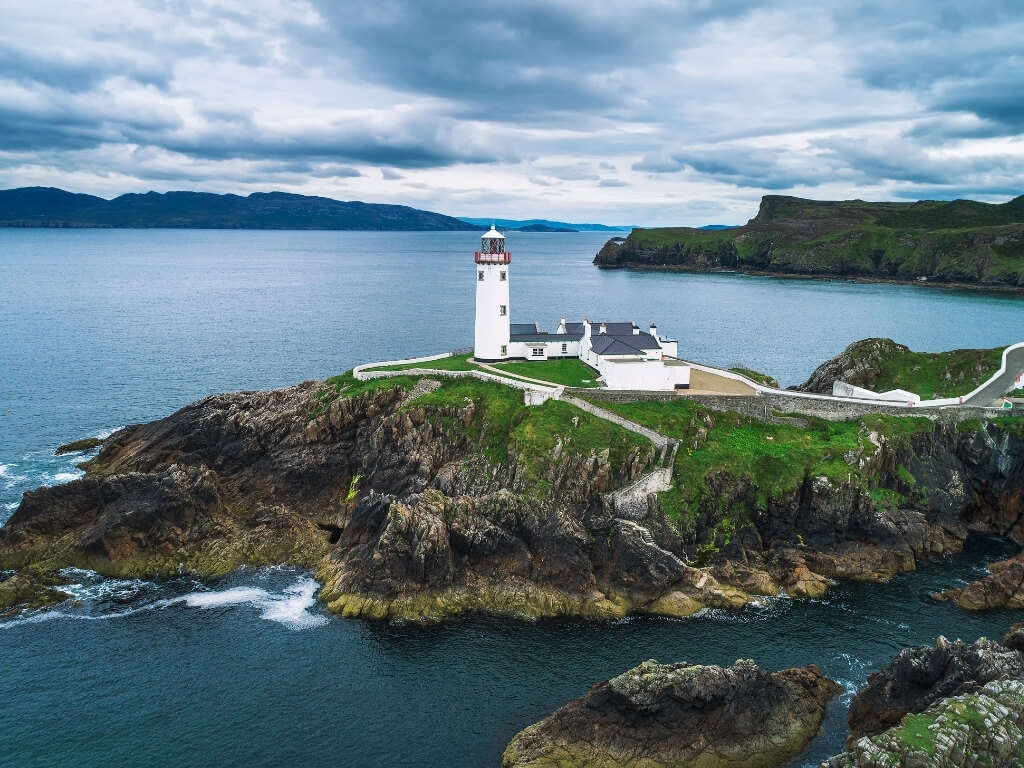
Donegal Town
One of the best places to go in Donegal is the town that lends its name to the county. Donegal was created by the Vikings who built a fort there. However, the town only really became established in the 1500s under the O’Donnells. It is not the largest town in the county but there are still plenty of things to see in Donegal and the nearby surrounding area.
Donegal Castle is a great place to see in Donegal. Dating from the 15th century, the castle was rebuilt and extended in the 1600s and further restored in the 1990s. The Great Hall is a must-see with an ornate fireplace, French tapestries and Persian rugs. There are guided tours hourly and is not-to-be-missed.
Another place to visit in Donegal is the Diamond. In the centre of this market square lies an obelisk that commemorates four Franciscan monks who wrote The Annals of the Four Masters in the 1600s, one of the most important sources of early Irish history. Copies of it are on display in the National Library in Dublin.
In Donegal Town, you can also visit the Donegal Craft Village, a small village of local handcrafters, whose workshops are located there. You can meet the crafters and buy locally produced gifts and crafts. There are also walks in, and around, the town and of course, plenty of pubs and cafes for refreshments after a day of exploring.
Donegal makes a great base for exploring the nearby coastline and also other places in Donegal such as Glenveagh National Park, which is just one hour’s drive from the town. You can search for Donegal accommodation deals here.
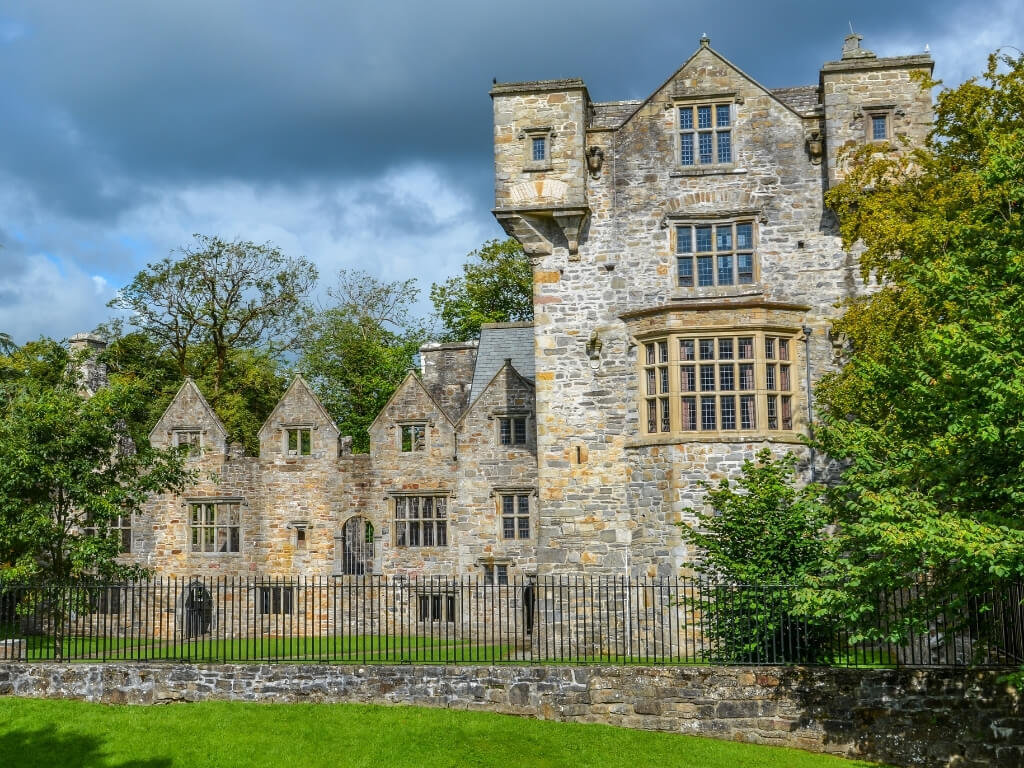
Lough Derg and Lough Eske
Very close to Donegal town are two picturesque places to visit, Lough Eske and Lough Derg. These two large lakes are the perfect places for a peaceful walk in nature.
Lough Derg was where St Patrick spent 40 days praying on one of the lake’s islands, making it popular with pilgrims. Station Island is the destination for the pilgrims where there is a religious complex including a basilica.
Lough Eske is located only a few kilometres from Donegal Town and is home to two of the top 5-star hotels in Donegal, Harvey’s Point and Lough Eske Castle. Visitors to the area can visit the castle hotel and wander the grounds. If you are looking for nature things to do in County Donegal, a visit to one of these two loughs is a must.
You can find out about the two luxury 5-star hotels in Donegal in this post.
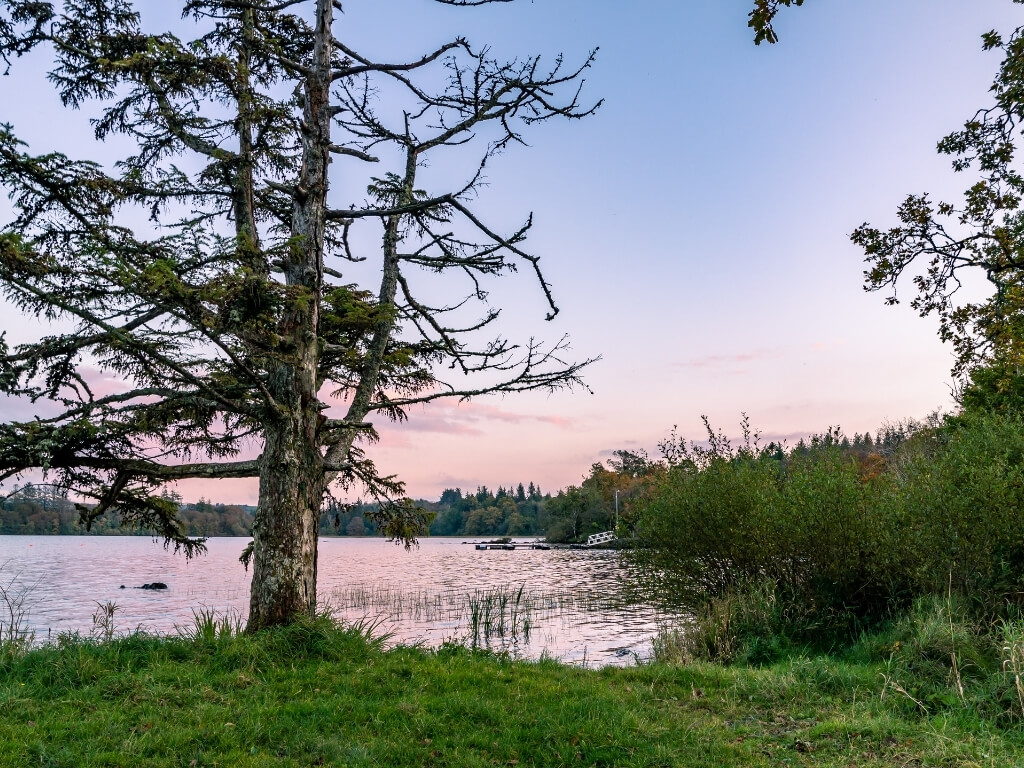
Glencolmcille
Glencolmcille is a tiny village in the southwest of County Donegal, not too far from the Slieve League cliffs. Pretty, and surrounded by natural beauty, it is another place of pilgrimage in Donegal. It is believed that the 6th century Saint Colmcille (Columba) founded a monastery there.
The St Columbia’s Church acts as the starting point for several walks in the area including the 5.5km pilgrimage route of An Turas Cholm Cille, which passes several prehistoric stone slabs and the ancient ruined church attributed to the saint.
Glencolmcille is also home to one of the top places to see in Donegal, the Glencolmcille Folk Village Museum. Replica houses perched on the hillside offer visitors a chance to step back in time and envisage rural Donegal lifestyles through the ages. Visitors can also see craft workshops and demonstrations at the museum.
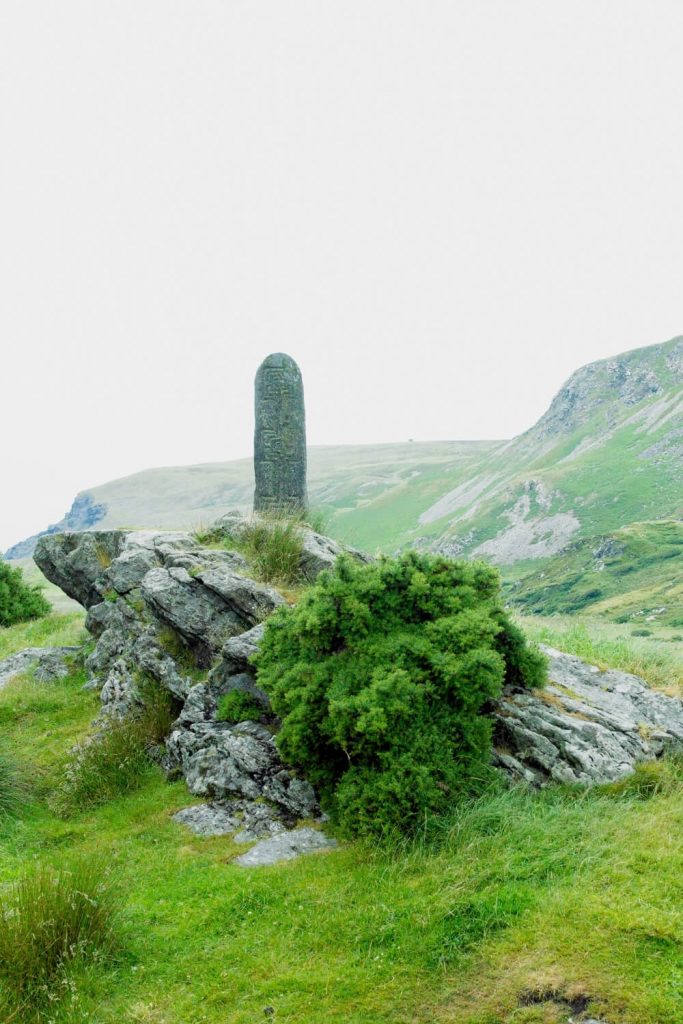
Donegal Beaches
The beaches in Donegal are among the best beaches in Ireland and there are so many in County Donegal, that it is hard to pick the top ones. Some of the best activities in Donegal involve the beaches in some way such as surfing, kayaking, kite-flying and swimming. Surfers often flock to the beaches of Donegal to hit the waves of the Atlantic Ocean.
Among the best are the following:
- Murder Hole Beach – located near Sheephaven Bay, Murder Hole Beach is two isolated beaches that are separated by an island when the tide goes out. This is hard to reach and requires permission from a farmer to cross his land.
- Portsalon – also known as Ballymastocker Bay, is a 1.5km sandy beach that was once voted the second most beautiful beach in the world. It is located on the Fanad Peninsula.
- Tullan Strand – located in the seaside town of Bundoran, south of Donegal Town, this 3km of sandy beach is popular with tourists in summer, although rip tides can make swimming hazardous. It is a discovery point along the Wild Atlantic Way.
- Five Fingers Strand – just south of Malin Head is this beach, backed by spectacular sand dunes. This secluded sandy beach gets its name from the five narrow sea stacks that protrude from the water on the north side of the beach. This is a place to visit for its beauty, not the swimming, which is treacherous.
- Culdaff Beach – also located on the Inishowen Peninsula is Culdaff Beach, a Blue Flag beach ideal for swimming and windsurfing.
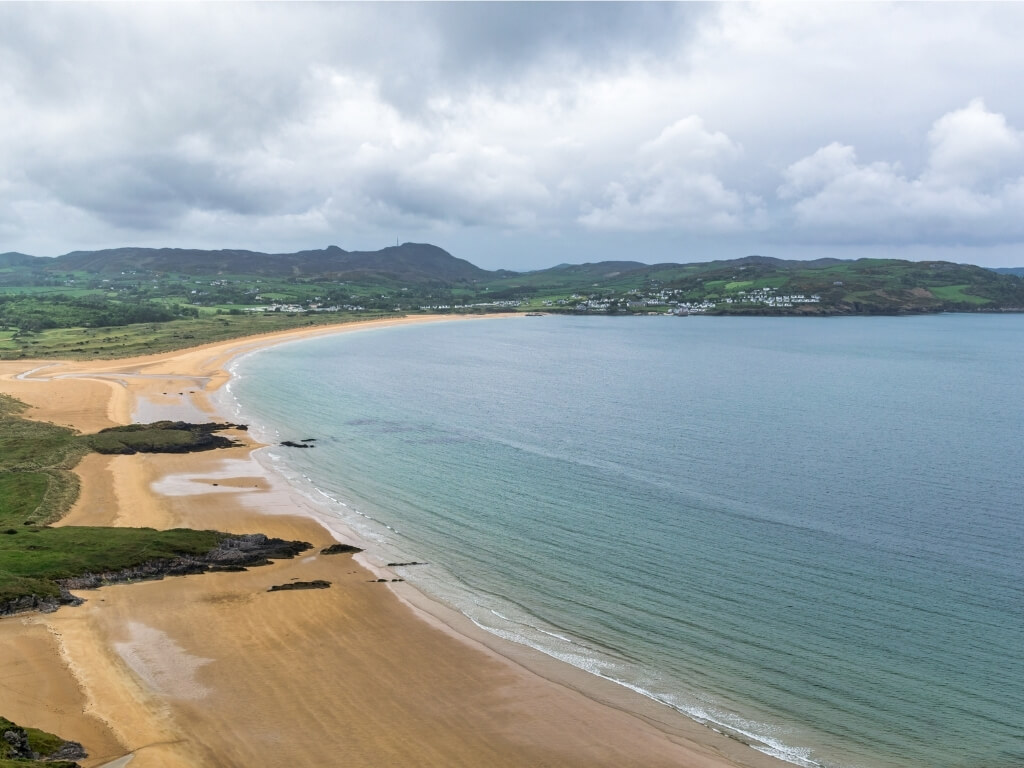
Grianán Ailigh
One of the best unique things to do in Donegal is to visit Grianán Ailigh. Located at the entrance to the Inishowen Peninsula and just 10km from Derry, this amphitheatre-like, circular stone fort is Donegal’s most impressive and intriguing ancient monuments.
Dating from the 5th century BC, it was built as a pagan temple and was later adopted as a fort by Christians. Between the 5th and 12th centuries, it was the seat of the O’Neill clan, with the O’Neill founder believed to have been baptised there by St Patrick. It was demolished by the armies of the King of Munster in the 12th century and much of what can be seen today was reconstructed in the 1800s.
It offers magnificent views of the surrounding area and on a clear day, you can see all the way to the city of Derry. It is a unique place to visit in County Donegal, especially if you are visiting the Inishowen Peninsula.
Visit this, and other places of interest on the Inishowen Peninsula on a private tour. Find more details and book this tour here.
Stay in Letterkenny for easy access to Grianán Ailigh. Find your accommodation here.
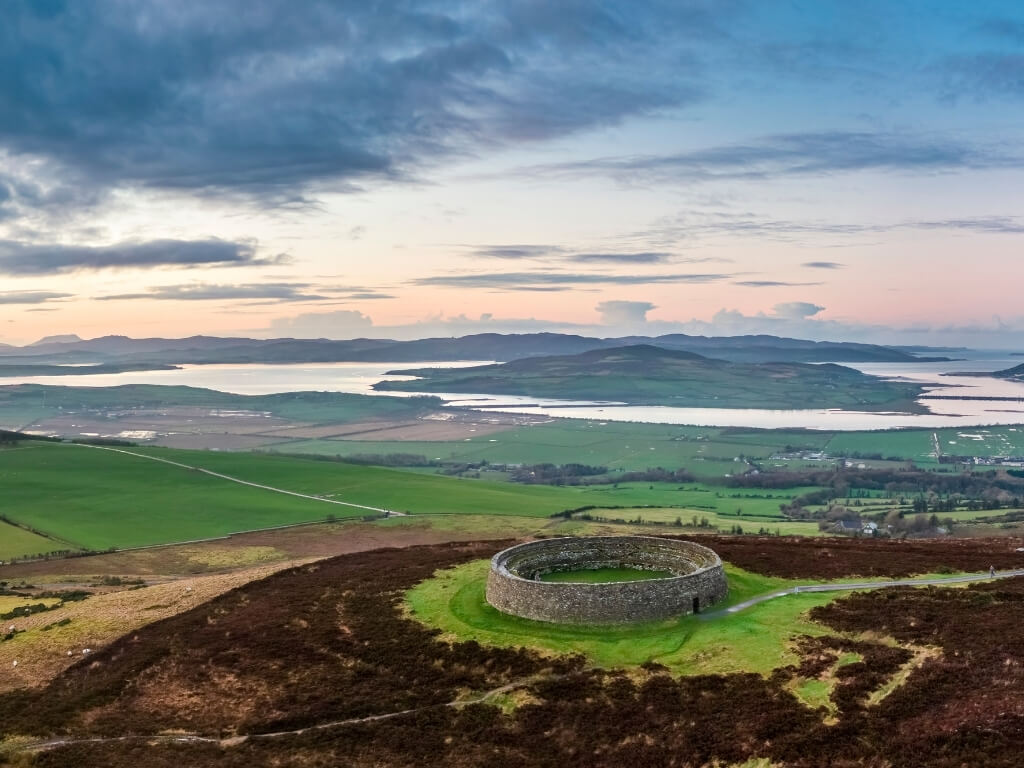
Quaint Coastal Towns
Some of the best places to go in Donegal are the quaint little towns and villages scattered across the county along its coastline.
Ardara is an interesting town to visit as it is the weaving capital of Donegal where you can visit the weavers at work and see the regional traditional crafts in action. Close to Ardara is the Assarancagh Waterfall and Maghera Strand, a stunning beach with caves at the western tip which are only accessible at low tide.
Killybegs is one of Ireland’s largest fishing ports and is a bustling, yet charming working town. It has a secluded beach at Fintragh Bay which is 3km west of the town. This beautiful beach is a must-see. Killybegs is also renowned for the manufacture of Donegal carpets.
These are just two of the many quaint villages dotted along the Donegal coast that are worth visiting while you visit the county.
Things to know about County Donegal
If you’ve never visited this part of the Emerald Isle, this section contains more information about County Donegal, Ireland that you might find useful.
Where is County Donegal? – If you are still wondering where is County Donegal, it is in the top North West corner of the island of Ireland. It is part of the Republic of Ireland and shares a border with Leitrim in the Republic, and Derry, Tyrone and Fermanagh in Northern Ireland.
County Donegal facts:
- Donegal comes from the Irish words of ‘Dún na nGall’ which means fort of the foreigners.
- The county covers an area of 4,861 square kilometres (1,877 square miles) and the population of County Donegal is approximately 159,200.
- It is one of the twenty-six counties of the Republic of Ireland.
- Donegal is the fourth largest county in all of Ireland.
- The Donegal Gaeltacht area is the second-largest in Ireland.
- It is a mostly mountainous county thanks to the Derryveagh Mountains and Blue Stack Mountains, with Mount Errigal being the highest peak at 794m (2457ft).
- Notable cities and towns in County Donegal – Major towns include Donegal, Letterkenny, Bundoran, Buncrana, Dungloe, Killybegs, Ardara and Ballyshannon.
Weather in Donegal – The weather in County Donegal is much like most places in Ireland with warm, damp summers and mild, wet winters. Summer has longer days with temperatures reaching around 18C, while winter is dark and cold with short days. Rainfall is common throughout the year. Temperatures in Donegal can be lower on average than parts of southern Ireland thanks to the winds that blow in from the Atlantic Ocean along the coast. To find out more about the weather in Ireland and the best time of year to visit Ireland, read this post.
Famous people from Donegal – Donegal has produced only a few famous people that you might have heard of. These include Tommy Tiernan (one of my favourite Irish comedians), Daniel O’Donnell (singer) and Frank McGuinness (writer).
Donegal is one of the best places to visit in Ireland and I hope this post has given you a glimpse into what to do in Donegal if you are thinking of visiting. With ideas on things to see, Donegal must-visit places and more, it is a truly beautiful corner of Ireland that you simply have to visit. I’ve also included some guided tours from Donegal, Letterkenny or Derry in case you don’t want to do the driving yourself.
